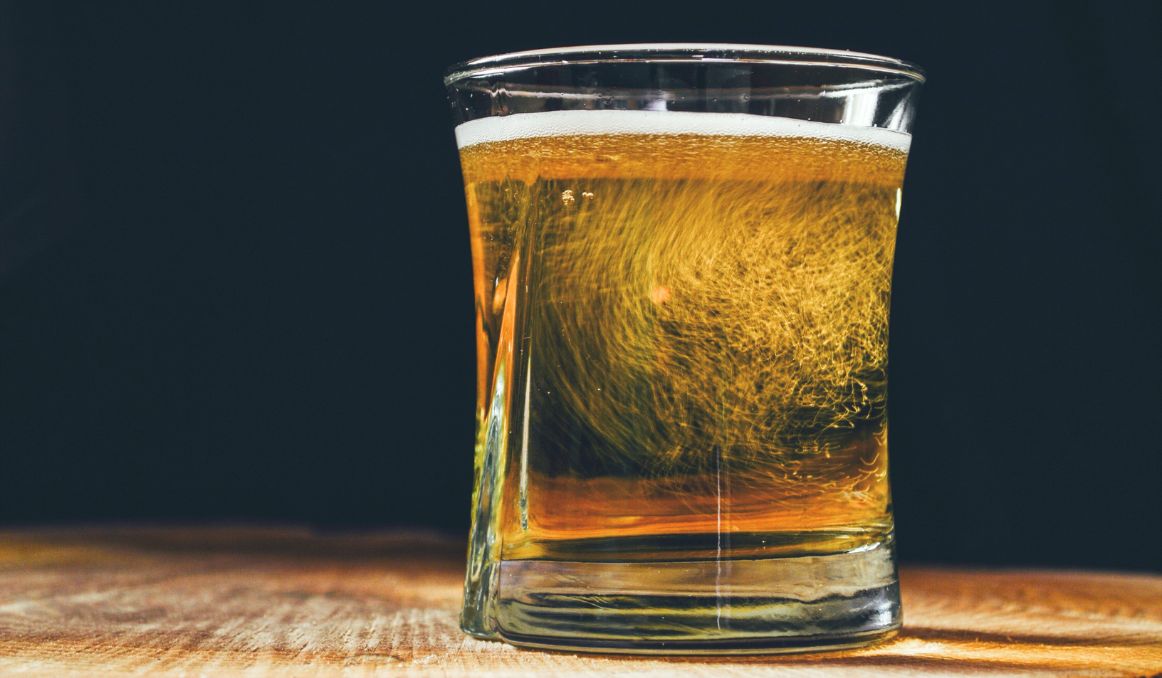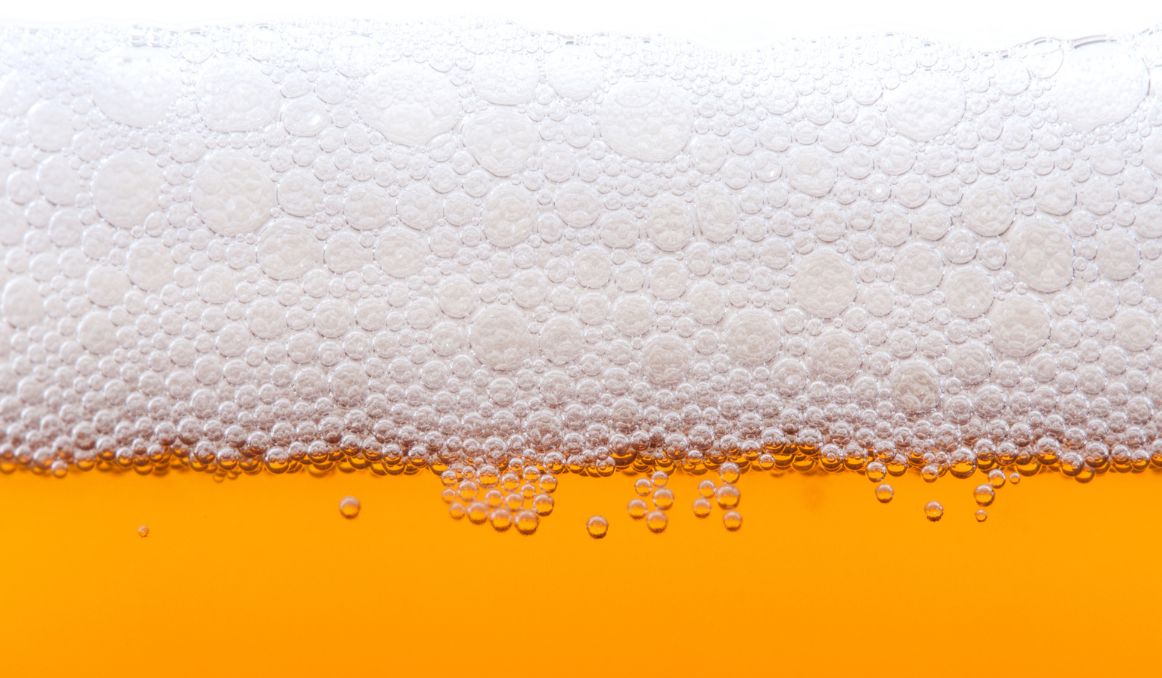Is Beer Naturally Carbonated?
Yes. You’ve asked the question, “is beer naturally carbonated?” And the answer is yes. As usual, though, there is so much more involved in the answer to this question.
Fermentation and Carbonation

First, let’s talk about why beer is naturally carbonated.
We have yeast to thank.
To make beer, the basic process has been the same from the very beginning of the first “discovery” of beer.
You need a toasted grain because toasting the grain converts the starches in the grain to sugars. This is actually how the discovery of beer was likely made. Farmers during the agricultural revolution thousands of years ago started toasting grains to bring out more flavor.
Imagine having to eat the same boring oats or barley every single day.
Next, you need to crack or grind your grain to expose those sugars as much as possible.
Then, you boil your grain and steep it, pulling all of the nutrients and sugars out of the grain and into the water, kind of like when you make tea.
Now what you essentially have is a “meal.” Think of oatmeal or cream of wheat.
Farmer’s wives would make batches of this for breakfast, the mush could be turned into cakes for travel, or the liquid could be used as a beverage now that it had been boiled.
Fortunately, if you leave this batch of mushed and mashed grain and liquid sitting out long enough, naturally occurring yeast in the environment, plus beneficial bacteria, will settle into the “wort” and start fermenting.
Bacteria will produce probiotics, which are great for gut health, and the yeast will produce alcohol and carbon dioxide – or carbonation.
Once farmers figured this out, they started adding hops to the brew as a bittering agent, so the drink was not too sweet, which also had the added benefit of helping to retain the carbonation in the drink.
However, because these ancient beers, like all beers created up to the past 200 years, were kept in open air vessels, the carbonation quickly dissipated.
So, beer has traditionally been a low carbonation, as well as a low alcohol, beverage.
Low Carbonated Beer
Contrary to what many beer drinkers, especially in the US, have come to expect, beer has long been a low carbonation beverage, and we still see examples of that truth today in beers made mostly outside of the US.
Get access for free to our Complete Beer Carbonation Guide!
Nitro Beer
Guiness Draught, out of Ireland, is one example of a low carbonation beer referred to as a nitro beer because it is pressurized using nitrogen rather than carbon dioxide prior to kegging or bottling. The result is a creamy, smooth texture with very low carbonation.
Breckenridge Brewery out of Colorado is another notable nitrogen brewed Irish Stout inspired by Guiness.
Cask Conditioned Beer
Cask conditioned beer is more in line with the traditional way of brewing, where brewers simply allow their beers to brew and settle in casks, which are not pressurized, so the carbonation will dissipate over time and result in a flatter, smoother beer likened to a luxury wine. Often a little sugar is added just before sealing the cask so fermentation will continue
Most cask conditioned beers come out of Europe and more specifically from Belgium and UK, but you can also find some interesting ones in the US.
Upright Brewing out of Portland, Oregon has a raw wheat beer worth checking out, and Side Project Brewing in St. Louis, Missouri has a Belgian style Trail Dubbel aged in red wine barrels.
Bottle Conditioning

For brewers who seek high carbonation, bottle or keg conditioning is typically in order.
The commercialization of brewing led to corporations in the 1800s to begin offering crisp, frothy, gassy beers to the public, so the public, especially in America, has come to demand carbonation from their brewers.
To supply those demands, brewers will add a bit of sugar and yeast to their beer just before bottling so that while the beer settles in the bottle, it will continue fermenting, creating more carbonation.
The end result is that ideal pfffft sound you get when you pop the top off the bottle of beer.
Force Carbonating Beer
Much larger breweries take this process a step further, and faster, and simply force their beer through gas lines as they bottle or keg it.
This process, called force carbonation, is much quicker than bottle or keg conditioning, and offers the same end result, if not a bit too much carbonation.
Smaller breweries can force carbonate beer with a carbon dioxide tank and a keg as well as a kegerator to keep the beer cool.
You’ll simply cool down your beer after it has fermented, allowing for a diacetyl rest, and then pump CO2 into the keg after you have filled it with beer. Doing so will force carbon dioxide into the liquid, where it will remain in the pressurized keg.
Over Carbonating Beer
It is important to be mindful when force carbonating or bottle conditioning beer that you can have too much of a good thing.
Budweiser is well known on the global beer market for being the gassiest beer in the industry, causing excessive burping of its loyal customers. What this extra gassiness means is that you are often getting more gas than beer.
Further, force carbonation and bottle conditioning can also lead to exploding bottles and kegs as carbon dioxide builds up during the extra fermentation time.
No one wants exploded glass or busted up kegs in their house or their brewery. So getting this process down is indeed an exact science.
In the end, although beer is naturally carbonated, some brewers take the extra step of adding carbonation to please their customers.
Meanwhile, many customers are increasingly calling for less carbonation.
It’s all about finding the sweet spot in experimenting with what works for you and your audience.
Cheers!
Passionate about the beer and/or wine making process? So are we! If you’re interested in finding out how you can use our technology to control fermentation and monitor your yeast, save work hours and improve the cost-efficiency of your business, drop us a line at [email protected] or check out our product pages:
- Oculyze BB 2.0 (Better Brewing) Yeast Cell Counter App + Hardware
- Oculyze FW (Fermentation Wine) Yeast Cell Counter App + Hardware
Also, you can now get access to a fully functional demo account to test your yeast via our Web App. Completely free of charge and with no commitment to purchase.
Sources:


